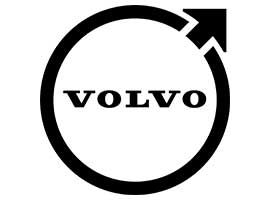
WHEN CULTURE IS BROKEN
"Culture is more than just building products and not getting yelled at."
Jason Aten, Tech Columnist for Inc. Magazine, recently wrote about the main issue within Google's culture. His headline catching article is subtitled: "There's nothing more important than culture."
Without even realizing it, the writer is building a strong case for the importance of infusing cohesion into a work culture. Cohesion positively impacts performance and engagement every time. It is a causal phenomenon and a proven method of predicting behavior.
Culture is broken when people do not feel connected to what they are doing, or with whom they are working.
Culture is broken when people are threatened and do not feel they are performing meaningful work.
Culture is broken when intimidation is the driving force to engage people into performing shared, mutual commitments.
Culture is broken when teams are not set up in a collaborative format where each person feels needed and trusted.
Culture may very well eat itself if not carefully cultivated and grown.
Once again I must refer back to the quote Peter Drucker has been credited with saying, "Culture eats strategy for breakfast."
Unfortunately, culture will consume whatever is in its path … weak leadership, strategy, product development, profits, etc. Culture has an insatiable appetite. Without making culture a strategy with a defined focus on belonging, value, and commitment, organizational culture has a tendency to fragment and lose its power. Without cohesion, it is impossible to have a productive, creative, harmonious, and engaged workforce.
It's not culture's fault when things go awry.
Leaders break the culture when they forget that it is people who get things done.
Leaders break the culture when they forget the importance of understanding and nurturing how people feel about the work they are doing, who they are doing the work with, and how they want to do the work.
Culture is broken when more emphasis is placed on tasks and neglecting how people are included, exhibit passion, and work together in harmony.
Culture is broken when people are not seen or heard.
The problem inside Google is consistent with issues I have seen with other companies. Too often, the management becomes so consumed with what they are trying to accomplish that the people-side of the business gets … well, quite frankly, side-lined – broken.
HOW TO UNBREAK THE CULTURE
I love my role coaching leaders to infuse cohesion into their cultures. When cohesion is present, the leader is setting up a psychologically safe workspace that includes three strategic elements: (a) Belonging – people truly feel included, (b) Value – connection is made between personal accomplishment and meaningful work, (c) Commitment – collaboration thrives in a manner where people agree to work on mutually desirable outcomes by trusting each other to show up and do their job.
When it is clear the culture needs some work, the first place I begin is validating the core values of the organization. It is important to make sure the values truly reflect the underlying guiding principles of the company. These principles reflect the focused characteristics the organization would take on if the business were human.
Core values create the foundation of the culture. It is from these values that people formulate beliefs, express attitudes, and demonstrate behaviors. So, to bring the values forward and "humanize" the company, it requires everyone in the organization to adopt, emulate, and live out these shared, core principles.
To that end, the success of a healthy work culture infused with cohesion relies on the following:
- Culture must embody the truth of serving others before self.
- Senior leaders must live out the values as if their lives depend on them.
- The core values must be so simple that employees can easily breathe, live, and own them.
To infuse cohesion into the culture, it always starts with belonging.
People need to feel that sense of being part of something. This feeling satisfies an important psychological feeling of inclusion. Oftentimes, we seek the opportunity to belong to an ideal or a way of thinking that is bigger than what we can ask for or imagine.
- For people to experience belonging, it is important that their psychological and physical needs are met. If that is not the case, such as the issue of "being yelled at" is present, then people will operate from a defensive posture protecting themselves at all cost. A lack of belonging and its counterpart, inclusion, negates the safe aspect of culture. A lack of belonging means culture is broken.
- When leaders thrust their employees into a defensive posture, employees do not have the mindset to move towards feelings of being needed, having self-esteem, and/or finding self-actualization. In a manner of speaking they are "stuck." They will hunker down and focus solely on what is in front of them and more than likely miss out on the opportunity to look upward and move forward.
- Most important to belonging is coming full circle and concluding with the feeling of inclusion. It is not enough to receive an invitation to participate, people want to be involved in sharing opinions, thoughts, and ideas. They want to be seen and heard. This feeling of inclusion can be more fully realized when meaningful work and collaboration are experienced in tandem with the feeling of belonging. This trifecta of elements unleashes the Cohesion Phenomenon that drives performance and engagement.
Ensure that people feel a sense of accomplishment in the work they do.
Their passion stems from having meaningful work where they know and experience it making a difference. Leaders cannot underestimate their responsibility to motivate, influence, and enable others to be successful.
This simple list of three actions (motivate, influence, enable) easily translates to the leader being responsible to motivate others toward a common goal, influence the thinking of those working together, and removing obstacles and barriers to get the job done. It is critical to feed the employee's intrinsic value system and remind them periodically the positive difference employees make in the relationships they build and the quality of work they do.
Set up collaborative work environments where employees can exercise agreements towards shared, mutual outcomes.
Collaboration occurs when individuals agree they need each other, and then trust others working on the project will do their jobs. An interesting aspect of collaboration (need and trust) is how it forms as a natural by-product from the presence of inclusion and meaningful work.
Please reference these previous editions of Cohesion Corner™️ with Dr. Troy! to gain more insight into fixing a broken culture with cohesion:






